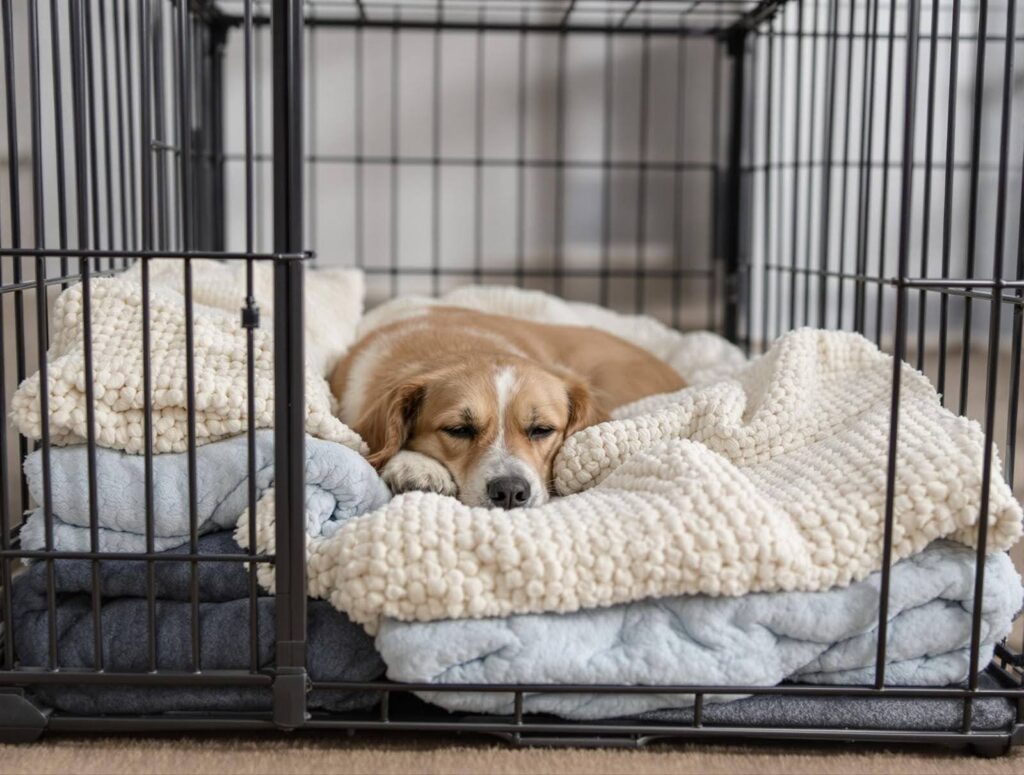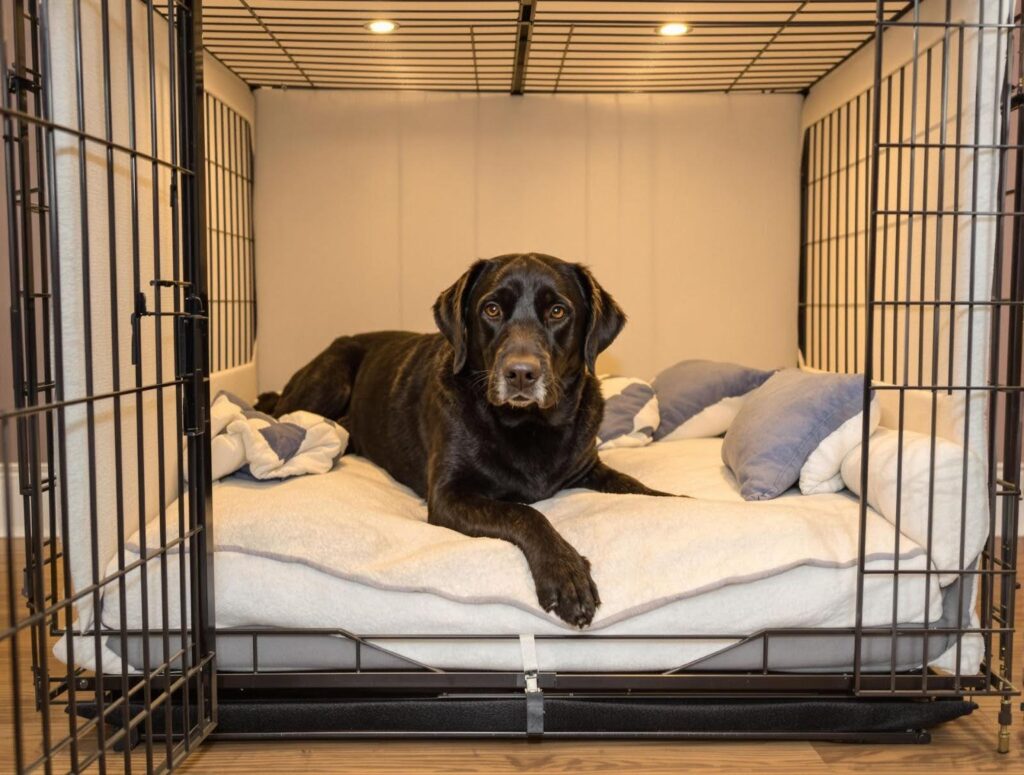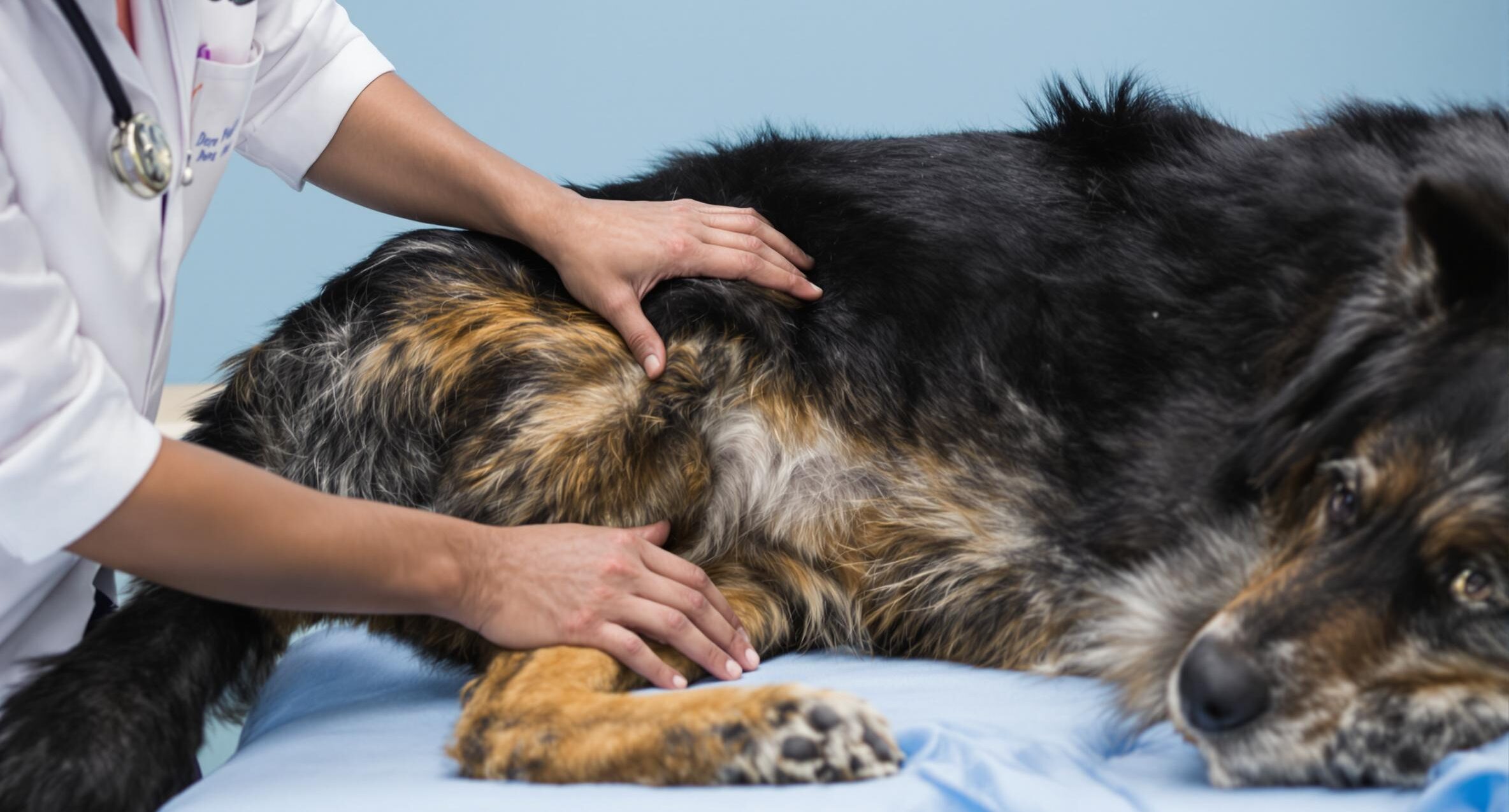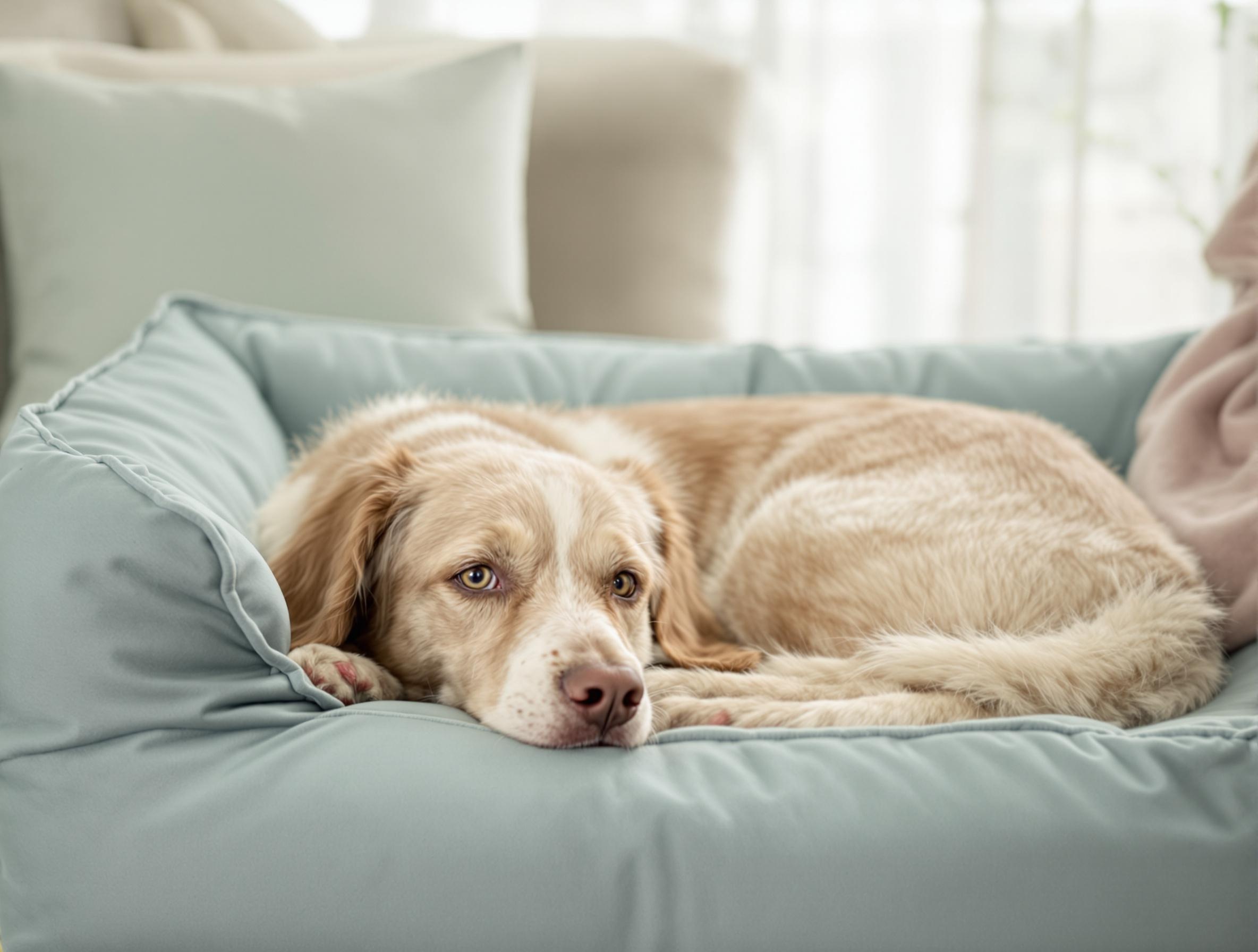How to Crate Train Your Dog: Pet Owner’s Guide

Does your dog need a space to call their own? Just like humans appreciate having a private retreat, dogs benefit from having a dedicated, safe space—like a crate. Learning how to crate train a dog properly creates both emotional and physical safety for your pet. Dogs with designated spaces experience less destructive behavior, making life more peaceful for both pets and their owners.
A positive approach to crate training helps turn a simple crate into a cozy retreat for your dog. This space can be especially comforting during stressful moments, such as thunderstorms or quiet time alone.
At PetHealthMD, we understand that creating a loving home for your pet is one of your biggest priorities. Our guides on pet health and care can help you achieve that with successful tips and common missteps to avoid as a dedicated pet parent.
Steps to crate training your pet
You may notice that your dog may naturally gravitate toward cozy, den-like spaces. Setting up your dog’s crate in a quiet area of your home helps balance privacy and connection. Making their space comfortable with a soft blanket and a favorite toy can make a big difference.
Once you’ve set up the crate, you can proceed by training them to use it:
- Introduce the crate gradually: Dogs are naturally curious but may be wary of new spaces. Placing treats near the crate entrance and gradually moving them inside helps create a positive association. Let your dog explore at their own pace to prevent feelings of being forced into an unfamiliar space.
- Encourage positive associations: Quiet praise and a calm demeanor signal to your dog that the crate is a safe and welcoming place. Avoid loud praise (we get your excitement!), as it can create unnecessary stress.
- Feed meals near the crate: Associating mealtime with the crate further reinforces it as a positive space. So place the bowl next to the crate and gradually move it inside.
- Practice short sessions: Once your dog is comfortable, close the crate door for short periods while staying nearby. Start with just a few minutes and gradually increase the time.
- Create a routine: A predictable schedule helps your dog feel more secure. Include crate time after meals, playtime, and before bedtime to get them used to being inside.
- Be patient and consistent: Every dog adapts at its own pace, so don’t get discouraged! Keep training sessions short and positive, allowing your dog to take their time.
Best tips for successful dog crate training
While every pet owner knows their furry friend best, these proven tips will come in handy when crate training your pet:
- Establish consistent daily routines: Dogs thrive on predictability. Establishing a routine for crate time, meals, potty breaks, and play sessions makes training more effective. A regular schedule allows your dog to understand when they can expect time outside of the crate.
- Design a welcoming den environment: Make the crate into a cozy retreat with soft bedding and a light cover over the top and sides, leaving the front open. This setup will get your dog comfortable in no time!
- Provide mental stimulation: Make time in the crate rewarding with special toys like KONG treats. These items create positive associations and provide a mental stimulation.
- Balance activity with rest: Regular physical exercise promotes natural relaxation during crate sessions. A well-exercised dog adapts more easily to their den space.
- Build duration gradually: Start with brief periods while you’re nearby, slowly increasing time as your dog shows comfort. Remember, patience and positive reinforcement build lasting confidence.
How to choose the right crate size for your dog

Think of crates as your pet’s personal room – just like we appreciate having the right amount of space in our homes, dogs need their crate dimensions tailored to their unique size and shape for maximum comfort.
To find the perfect fit, grab a measuring tape and your dog’s favorite treat to help keep them still! Measure from the tip of their nose to the base of their tail while they’re standing naturally. Next, measure their height from the top of their head to their paws. Add 4 inches to both measurements – this extra space allows larger dogs to stretch comfortably and smaller breeds to move freely. Your dog should be able to stand without hunching, turn around naturally, and lie down with their legs extended.
For puppies, consider their growth journey when selecting a crate. While it might be tempting to purchase an adult-sized crate immediately, too much space can interfere with house training. A better option is choosing a crate with an adjustable divider panel – this practical solution adapts as your puppy grows.
Crate training adult dogs vs. puppies

While crate training is crucial for both adult dogs and puppies, how you approach it may vary depending on their age, past experiences, and temperament. Understanding the differences in training methods will help ensure a smooth and positive experience for your pet.
Training puppies
- Building a routine early – Puppies are like sponges, quickly adapting to structure and schedules. Introducing crate training early helps with housebreaking and sets the foundation for long-term crate acceptance.
- Frequent potty breaks – Young puppies have limited bladder control and need more frequent potty breaks. A general rule is that a puppy can hold their bladder for about one hour per month of age (e.g., a 3-month-old puppy should be let out every three hours).
- Using a divider – Since puppies grow rapidly, an adjustable crate with a divider ensures they have enough space without being overwhelmed by too much room. A properly sized area will help you prevent accidents and reinforce good habits.
- Short training sessions – Puppies tend to have short attention spans. Introduce the crate in brief, positive increments and gradually extend the duration as they become more comfortable.
Training adult dogs
- Adjusting to previous experiences – Some adult dogs may have had negative experiences with crates or may never have been exposed to one. Just be patient and use gentle encouragement to help them feel safe in the new environment.
- Longer crate durations – Unlike puppies, adult dogs have better bladder control and can stay in the crate for longer periods, usually 4-6 hours during the day. However, you’ll still need to give them breaks for exercise and interaction.
- Addressing anxiety or resistance – If an adult dog is anxious about the crate, go slow and use high-value rewards to create positive associations. Some dogs may need extra time to feel at ease, especially if they have a history of confinement-related stress.
- Providing extra comfort – Older dogs may have joint issues or general discomfort in confined spaces. Adding extra padding or an orthopedic mat can make the crate more inviting and suitable for their needs.
Common questions in dog crate training
Every dog owner wants to create a positive crate training experience, and with the right approach, you can avoid common pitfalls that might slow down your progress. Let’s look at some frequent challenges you might face and their simple solutions.
How can I maintain a positive crate experience for my dog?
Your dog’s crate should always be a happy space, never a place for time-outs or discipline. Positive associations are key to successful training. Make the crate inviting by offering special treats when your dog enters and using gentle, encouraging words during crate time.
What’s the best way to create a consistent crate routine?
Create a consistent routine by planning crate times around your dog’s natural daily rhythm. For example, schedule regular crate periods during typical nap times and overnight sleep. Start with shorter intervals and gradually extend them as your dog becomes more comfortable.
What if my dog seems anxious about the crate?
Start with short, positive experiences and gradually build the duration. If your pup shows signs of anxiety, pause and return to the last successful step. Remember to reward calm behavior and provide comfort items like a favorite blanket or toy that makes the crate feel welcoming.
Crate training for overall pet well-being

A properly introduced crate becomes your dog’s haven, strengthening their emotional resilience and confidence. Dogs with a dedicated space feel more relaxed during daily activities and adapt better to new situations. This positive association helps them develop healthy ways to stay calm, making everyday experiences – from vet visits to car rides – more pleasant.
A comfortable crate prevents curious pups from exploring household hazards when you can’t watch them directly. This protective environment proves especially valuable during unexpected situations – your dog will stay protected and calm when quick actions are needed.
While the process typically spans several days to weeks, remember that every dog progresses at a unique pace. If you’re looking to gain more insights on successfully training your dog, PetHealthMD has you covered with training guides and care tips! For supplies and treatments, look no further than PetMeds! We provide you with treatments, essential supplies, and even toys from renowned brands in the market.





